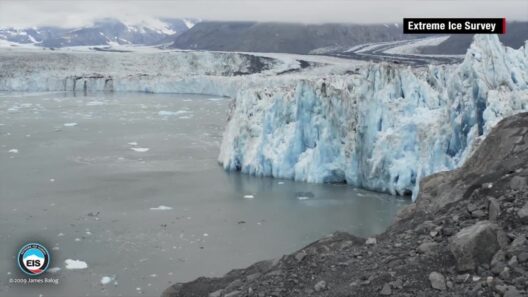In the realm of classical mechanics, one of the paramount principles revolves around the concept of total mechanical energy. So, is the total mechanical energy of a system conserved? This question not only invites profound contemplation but also poses a playful challenge for those intrigued by the intricate dance of forces and energies at play in our universe. Conservation of mechanical energy is foundational in understanding the behavior of physical systems, yet its application and valid scope often incite curiosity.
To delve into this enigma, we must first elucidate what constitutes total mechanical energy. It is the sum of kinetic energy (KE) and potential energy (PE) within a system. Kinetic energy, as defined by the equation KE = ½ mv², is the energy possessed by an object due to its motion. In contrast, potential energy is energy stored within a system due to its position or configuration, with gravitational potential energy often calculated using the formula PE = mgh, where ‘m’ is mass, ‘g’ is gravitational acceleration, and ‘h’ is height above a reference point.
The question of conservation hinges on the constraints applied to the system under consideration. In an ideal scenario—where external forces like friction are negligible—mechanical energy remains constant. This principle is vividly exemplified in the motion of a pendulum. As the pendulum swings, kinetic energy is converted to potential energy and vice versa, creating an oscillation that seemingly perpetuates indefinitely. Herein lies a playful challenge: envision the pendulum as a metaphor for life, oscillating between various states, manifesting the ebbs and flows of energy.
However, this idealistic view collapses under the scrutiny of real-world applications. In practice, energy is subject to conversion processes and often dissipated as thermal energy due to frictional forces or air resistance. A rolling ball on a rough surface eventually comes to a halt as its kinetic energy dissipates into heat, thereby illustrating a violation of conservation under non-conservative forces. Should we then consider the total mechanical energy as a mere abstraction, relevant only within the confines of theoretical physics?
The distinction between conservative and non-conservative forces is critical in understanding energy conservation. Conservative forces—such as gravitational and elastic forces—allow mechanical energy to be conserved within a closed system. When an object moves under the influence of these forces, any change in potential energy directly correlates with changes in kinetic energy. The total mechanical energy remains constant, provided no external work is done.
Conversely, non-conservative forces, such as friction and air resistance, induce energy transformations that lead to dissipation. These forces transform mechanical energy into other forms, particularly thermal energy, thus violating the conservation principle within that particular system. In essence, while mechanical energy is conserved in specific conditions, it is also subject to alteration by external influences, signaling the limitation of its conservation in broader contexts.
The law of conservation of energy, however, transcends mechanical energy alone. In an isolated system, the total energy, encompassing all forms—kinetic, potential, thermal, chemical, and more—remains constant. Thus, even when mechanical energy is not conserved due to the actions of non-conservative forces, the overarching principle persists. This universality leads to the intriguing realization that energy cannot simply disappear; it manifests through different forms, continuously evolving and transforming as it traverses through various states.
Furthermore, examining specific energy systems deepens our understanding of mechanical energy conservation. In systems involving springs, for example, mechanical energy remains conserved as energy oscillates between kinetic and elastic potential states. The application of Hooke’s Law, describing the force exerted by a spring, illustrates how energy is stored and released, typically operating under conservative forces. Such nuances render springs intriguing subjects for experiments demonstrating energy conservation principles.
The implications of energy conservation stretch beyond theoretical underpinnings into real-world applications and sustainability challenges. Understanding mechanical energy helps engineers and scientists devise innovative energy solutions. For instance, in designing mechanical systems like roller coasters, engineers harness the principles of mechanical energy conservation to optimize safety while creating exhilarating experiences. Likewise, the perpetuity of energy machines, such as perpetual motion devices, directly contradicts the fundamental laws of physics, emphasizing that while creativity inspires invention, it must adhere to the established laws of energy conservation.
As we dig deeper into the discourse on mechanical energy conservation, we must also reflect on the sustainability of our practices. Acknowledging that energy is never truly lost, but merely transformed highlights the importance of sustainable energy sources. The transition from fossil fuels to renewable energy—solar, wind, and hydro—echoes our pursuit for sustainable practices that respect the conservation principle. Each action taken towards harnessing natural energy sources mirrors an acknowledgment of the delicate balance of energy forms within our ecosystems.
In conclusion, the query “Is the total mechanical energy of a system conserved?” unravels a tapestry of complexity strung together by the laws governing energy dynamics. While total mechanical energy conservation holds true in idealized, closed systems absent of external influences, real-world occurrences often highlight the transformative nature of energy. By recognizing energy’s multifaceted existence, we can better appreciate our interconnections with the environment and foster approaches that enhance sustainability. Perhaps the challenge lies not solely in the conservation of mechanical energy, but in our ability to embrace the myriad forms that energy can manifest, ensuring a viable future fueled by our understanding of these principles.








